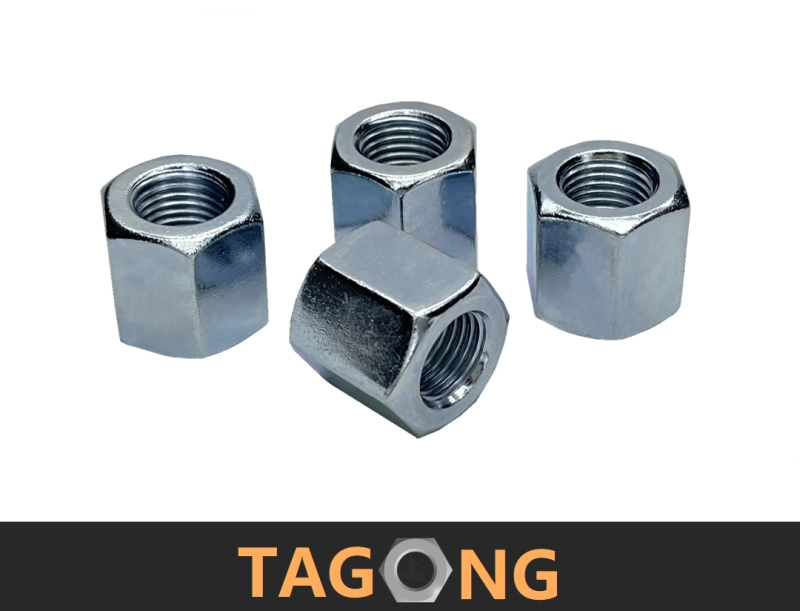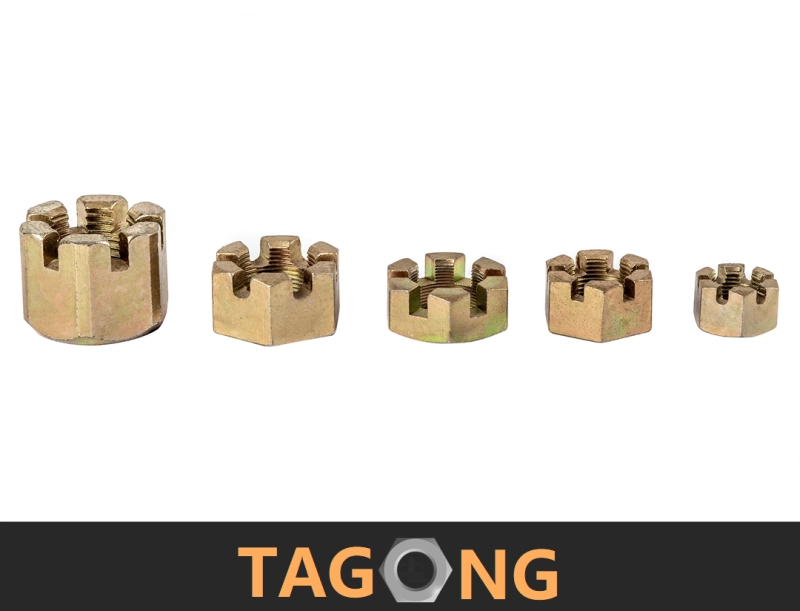With over 38 years of experience, TAGONG is the expert in manufacturing standard fasteners and special fasteners
+86 15160779301
+86 18906098857
Common Misconceptions About Yellow Zinc Nuts for Auto Parts: Debunking Myths and Clarifying Facts
2025-05-30
Common Misconceptions About Yellow Zinc Nuts for Auto Parts
In the world of automotive components, **yellow zinc nuts** often find themselves surrounded by a cloud of misunderstandings and myths. These small yet crucial fasteners play a pivotal role in assembling and securing various parts of vehicles. However, misconceptions can lead to poor choices in materials, affecting performance, safety, and durability. This article aims to debunk those myths and provide clear, factual insights into the use and benefits of yellow zinc nuts in auto parts.
Table of Contents
1. Introduction to Yellow Zinc Nuts
2. The Role of Yellow Zinc Nuts in Auto Parts
3. Common Misconceptions About Yellow Zinc Nuts
3.1 Myth 1: Yellow Zinc Coating is Just for Aesthetic Appeal
3.2 Myth 2: Yellow Zinc Nuts Are Not Durable
3.3 Myth 3: Yellow Zinc Nuts Are More Susceptible to Corrosion
3.4 Myth 4: Only Stainless Steel Nuts Should Be Used in Automotive Applications
3.5 Myth 5: Yellow Zinc Nuts Are Inferior to Other Coatings
4. Benefits of Using Yellow Zinc Nuts in Auto Parts
4.1 Enhanced Corrosion Resistance
4.2 Improved Load-Bearing Capabilities
4.3 Cost-Effectiveness Compared to Alternatives
5. Best Practices for Selecting Yellow Zinc Nuts
5.1 Understanding Specifications
5.2 Ensuring Compatibility with Other Components
5.3 Importance of Quality Assurance
6. Conclusion
7. Frequently Asked Questions (FAQs)
1. Introduction to Yellow Zinc Nuts
Yellow zinc nuts are fasteners coated with a yellow zinc plating that serves both functional and aesthetic purposes. The coating not only enhances the appearance of the nuts but also provides a layer of protection against environmental elements. Zinc plating is a common practice in the automotive industry, known for its ability to prevent rust and corrosion, thus extending the lifespan of the fasteners.
2. The Role of Yellow Zinc Nuts in Auto Parts
Within the automotive realm, yellow zinc nuts play a vital role in securing components such as engines, chassis, and suspension systems. Their primary function is to hold together various parts, ensuring they remain intact during operation. The reliability of yellow zinc nuts is crucial, as any failure in fastening can lead to severe mechanical issues or safety hazards.
3. Common Misconceptions About Yellow Zinc Nuts
While yellow zinc nuts are widely used in the automotive industry, several misconceptions persist. Addressing these myths will help users make informed decisions.
3.1 Myth 1: Yellow Zinc Coating is Just for Aesthetic Appeal
Many believe that the yellow zinc finish is merely for looks. In reality, the coating provides a functional barrier against corrosion. The lustrous yellow hue is the byproduct of an electroplating process that enhances the nuts' durability and resistance to environmental factors.
3.2 Myth 2: Yellow Zinc Nuts Are Not Durable
Another widespread myth is that yellow zinc nuts lack durability. This misconception stems from a misunderstanding of the properties of zinc plating. In fact, yellow zinc nuts are designed to withstand significant stress and strain, making them suitable for various automotive applications. Their load-bearing capabilities are often comparable to, if not better than, many alternative materials.
3.3 Myth 3: Yellow Zinc Nuts Are More Susceptible to Corrosion
Contrary to popular belief, yellow zinc nuts offer excellent corrosion resistance. The zinc coating acts as a sacrificial layer, protecting the underlying metal from rust. This is particularly important in automotive environments where exposure to moisture and other corrosive elements is common.
3.4 Myth 4: Only Stainless Steel Nuts Should Be Used in Automotive Applications
Some individuals claim that only stainless steel nuts can be relied upon for automotive applications. While stainless steel offers advantages, yellow zinc nuts are a viable alternative that provides comparable performance at a lower cost. The choice between the two depends on the specific requirements of the application.
3.5 Myth 5: Yellow Zinc Nuts Are Inferior to Other Coatings
Finally, there's a misconception that yellow zinc nuts are inferior to other types of coatings like black oxide or chrome. Each coating has its advantages, but yellow zinc plating is highly regarded for its balance of cost, performance, and corrosion resistance, making it a popular choice in the industry.
4. Benefits of Using Yellow Zinc Nuts in Auto Parts
Understanding the benefits of yellow zinc nuts can further clarify their value in automotive applications.
4.1 Enhanced Corrosion Resistance
Zinc plating provides an extra layer of protection against corrosion, which is crucial for automotive applications. Vehicles are constantly exposed to harsh conditions, including moisture, road salt, and chemicals. Yellow zinc nuts stand up to these challenges, ensuring longevity and reliability in fastening.
4.2 Improved Load-Bearing Capabilities
Yellow zinc nuts are engineered to handle high loads without deforming or losing grip. Their strength is essential in automotive applications where secure fastening is necessary for safe operation. This makes them a preferred choice for critical components.
4.3 Cost-Effectiveness Compared to Alternatives
When evaluating fasteners for automotive use, cost is often a significant consideration. Yellow zinc nuts typically come at a lower price point than stainless steel options, offering a cost-effective solution without compromising quality. This makes them an attractive choice for both manufacturers and consumers.
5. Best Practices for Selecting Yellow Zinc Nuts
When it comes to selecting yellow zinc nuts, there are several factors to consider to ensure you make the best decision for your automotive needs.
5.1 Understanding Specifications
Before purchasing yellow zinc nuts, it's essential to understand the specifications required for your application. This includes thread size, nut dimensions, and strength ratings. Ensuring the selected nuts meet these specifications is vital to achieving optimal performance.
5.2 Ensuring Compatibility with Other Components
Compatibility with other components is critical for the functionality of yellow zinc nuts. Always check that the nuts can effectively mate with the bolts and other fasteners used in your automotive assembly. Mismatched components can lead to failure and unsafe conditions.
5.3 Importance of Quality Assurance
Quality assurance is paramount when selecting yellow zinc nuts. Opt for manufacturers known for their stringent quality control processes. Certified products can guarantee that you're using reliable and safe fasteners in your automotive applications.
6. Conclusion
In conclusion, yellow zinc nuts are a reliable and cost-effective choice for various automotive applications. By debunking common misconceptions, we hope to shed light on their true value and capabilities. Understanding the benefits and proper selection of yellow zinc nuts can significantly enhance performance and safety in automotive systems. Investing in quality fasteners is crucial for ensuring the longevity and reliability of any vehicle.
7. Frequently Asked Questions (FAQs)
1. What is the main purpose of yellow zinc nuts in auto parts?
Yellow zinc nuts are used to secure automotive components, ensuring they remain intact during operation and enhancing overall vehicle safety.
2. How do yellow zinc nuts compare to stainless steel nuts?
While stainless steel nuts offer high corrosion resistance, yellow zinc nuts provide a cost-effective alternative that also resists corrosion and supports high load capacities.
3. Are yellow zinc nuts suitable for outdoor applications?
Yes, yellow zinc nuts are designed to withstand harsh environmental conditions, making them suitable for outdoor and automotive applications.
4. Can yellow zinc nuts be used in high-temperature environments?
Yellow zinc nuts can perform well in moderate temperature environments, but for extreme high-temperature applications, other materials may be more suitable.
5. What should I consider when purchasing yellow zinc nuts?
Consider specifications, compatibility with other components, and the reputation of the manufacturer for quality assurance before purchasing yellow zinc nuts.
With this comprehensive understanding of yellow zinc nuts, we hope to empower you with the knowledge required to make informed choices about your automotive fasteners.
Yellow Zinc Nuts DIN74361 Auto Parts
RELEVANT INFORMATION
Common Misconceptions About Yellow Zinc Nuts for Auto Parts: Debunking Myths and Clarifying Facts
Common Misconceptions About Yellow Zinc Nuts for Auto Parts
In the world of automotive components, **yellow zinc nuts** often find themselves surrounded by a cloud of misunderstandings and myths. These small yet crucial fasteners play a pivotal role in assembling and securing various parts of vehicles. However, misconceptions can lead to poor choices in materials, affecting performance, safety, an
2025-05-30
Understanding DIN6330 Hex Coupling Nuts: Essential Components for Industrial Fastening Solutions
DIN6330 Hex Coupling Nuts are critical components in the realm of industrial fasteners and connectors. They serve as a vital linking element between two male threaded parts, allowing for a secure and robust connection in a variety of applications. Understanding the specifications and applications of DIN6330 Hex Coupling Nuts can greatly enhance the efficiency and reliability of your fastening solu
2025-05-27
Understanding the Significance of DIN937 Standard for Selecting M24 Truck Nuts
Why DIN937 Standard Matters for Your M24 Truck Nuts Selection
Table of Contents
Introduction to DIN937 Standard
Understanding M24 Truck Nuts
The Importance of Standardization in Fasteners
A Deep Dive into DIN937 Standard
Benefits of Using DIN937-Compliant M24 Truck Nuts
Selecting the Right Material for M24 Truck Nuts
Best Practices for Installation and Maintenance
2025-05-24




